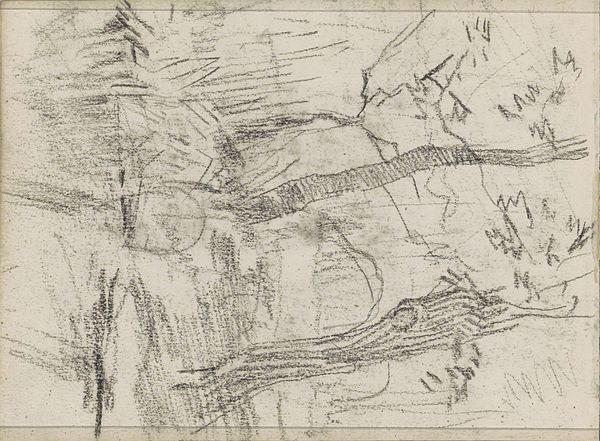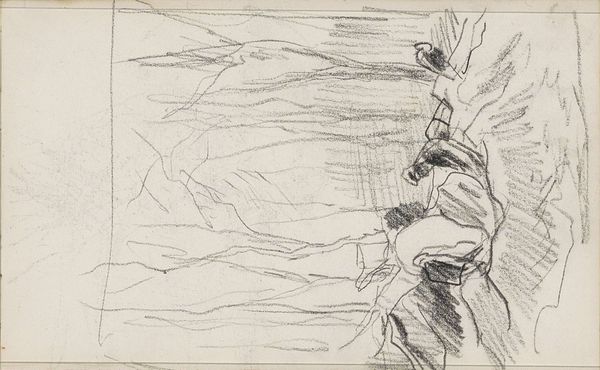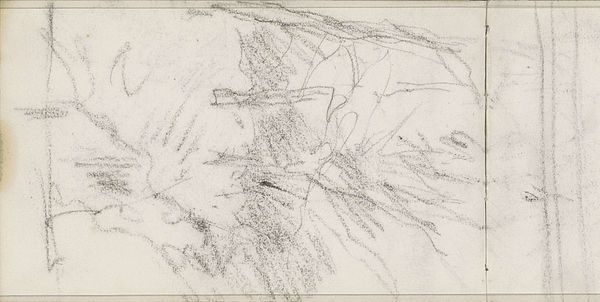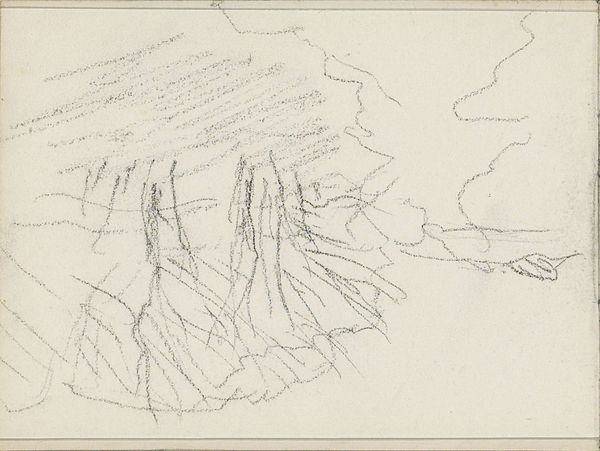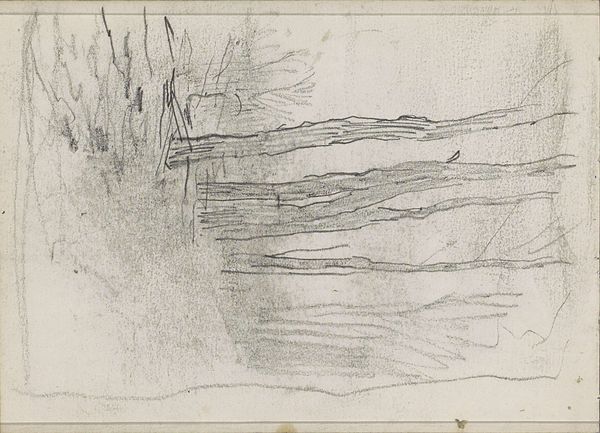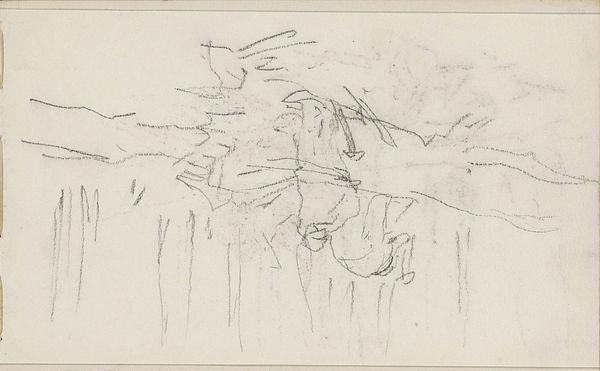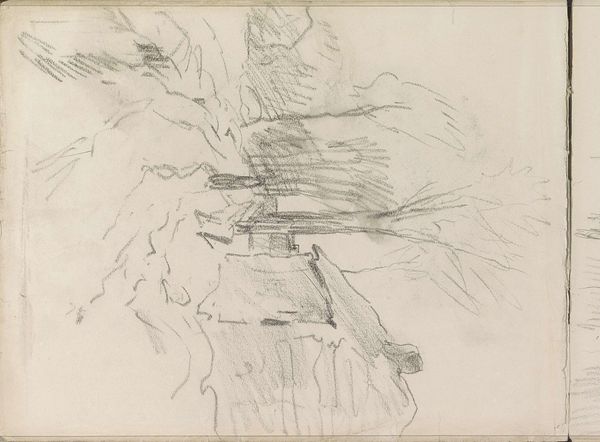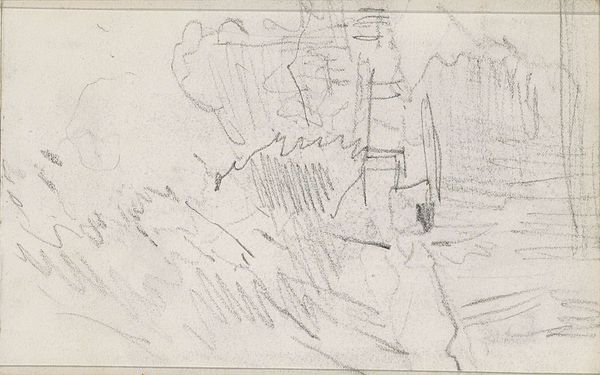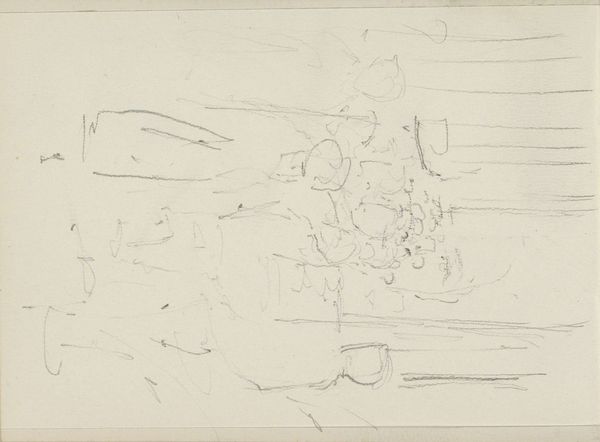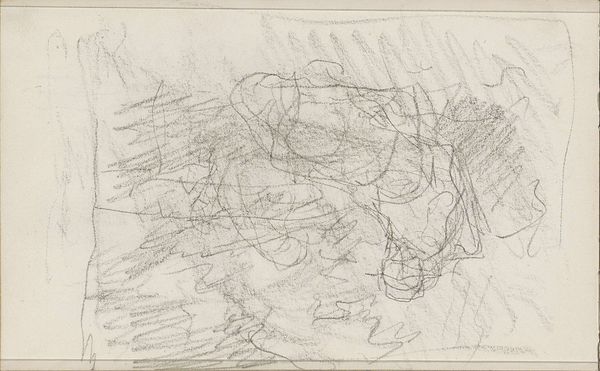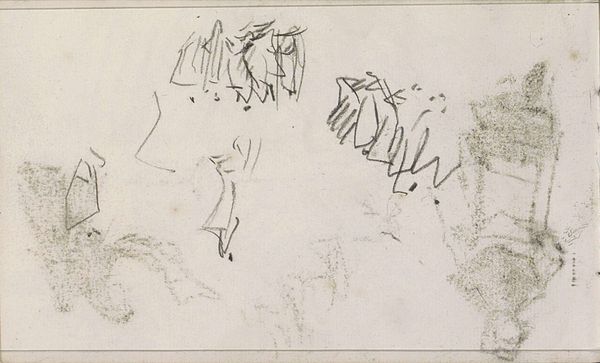
#
amateur sketch
#
light pencil work
#
quirky sketch
#
incomplete sketchy
#
personal sketchbook
#
sketchwork
#
pen-ink sketch
#
sketchbook drawing
#
sketchbook art
#
initial sketch
Copyright: Rijks Museum: Open Domain
Editor: This is a work called "Studie" by Anton Mauve, made sometime between 1848 and 1888. It's a sketch, looks like pencil on paper. The marks are so quick and raw. What catches your eye when you look at this? Curator: Immediately, I consider the context of its production. Mauve’s studio practice. This sketch offers a glimpse into the labor of artistic creation, stripped bare. Note the deliberate lack of finish, almost a refusal to transform labor into a commodity. How does its raw materiality challenge conventional notions of "high art?" Editor: I guess because we’re so used to seeing finished paintings, that a sketch feels incomplete. This looks more like a notebook doodle than a masterpiece. Curator: Precisely. And isn't that its strength? By foregrounding the *process* of drawing—the direct application of pencil to paper—it reminds us of the physical and mental effort embedded in all art. We see the decisions, the revisions, laid bare. Think of the social position of artists then; did these private sketches influence a democratization of art making? Editor: That's an interesting thought, I hadn't considered it that way. The availability of materials played a big part, right? Pencils were becoming more widely available... Curator: Exactly. The industrial production of art materials enabled wider participation, even in a rudimentary form like this. Consider, too, that even what we deem "waste"—sketches, studies, failed attempts—reflects the consumption of resources. Where did that paper come from, who made the pencils, who collected them? Every artwork, regardless of apparent finish, has a material cost, right? Editor: It really changes how you look at something, thinking about where it all comes from. I see a lot more in this now. Curator: It highlights art’s tangible connections to the broader material world. We aren’t just observing a drawing but, at a fundamental level, witnessing how it reflects labor.
Comments
No comments
Be the first to comment and join the conversation on the ultimate creative platform.
